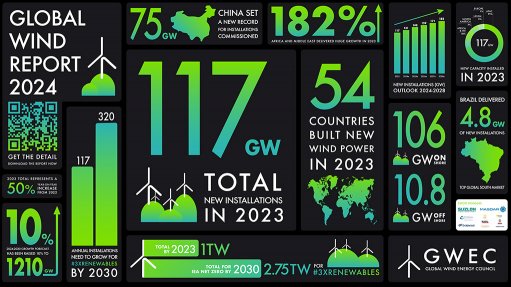Price war placing pressure on proper design, warns Arup SA boss
South Africa’s struggling economy has increased the pressure on engineering firms to underbid on larger projects, says Arup Southern Africa leader Poya Rasekhi.
This, however, often leads to poor design and staff burn-out, which almost inevitably ensures that the final price tag ends up being much higher than the bid price, he notes.
“In a fiercely competitive procurement environment, a high focus on pricing is forcing many developers, advisers and constructors to reduce upfront design costs. While this may help some to fulfil procurement expectations, it also greatly increases the undesired risk of cost overruns and delays.”
Government is currently not spending large amounts of money on new infrastructure, says Rasekhi.
“There are opportunities for government and the private sector to spend money on infrastructure projects to stimulate the economy, support existing and new businesses and develop new talent. Countries like Australia and Ethiopian have turned around their economies during the recession by advocating strong collaboration between public and private sector for a common goal.”
The problem of underbidding is often compounded by the fact that some clients do not have the right ability in-house to determine the correct price level for a specific project.
“Let’s say a small municipality has bids coming in for 10 km of road, priced at between R10-million and R90-million,” says Rasekhi. “If there was an engineer at that municipality, he or she would be able to determine a rough cost estimate to produce that 10 km of road at the right quality.”
In an effort to highlight and communicate the knock-on effect of poor design, Rasekhi commissioned a study called ‘The Value of Good Design’.
“I commissioned the study because of concern around the potential erosion of the built environment in South Africa. The research proves that by spending a bit more on design upfront, project costs can be significantly curtailed.”
The report, quoting a variety of sources, states that “excellent early design is the key to reducing risk and managing cost in built environment projects”.
The report notes a number of projects where poor design increased costs significantly, such as construction of South Africa’s 2010 FIFA World Cup stadia, which saw a cost overrun of around 34%, as well as significant delays. According to the University of Pretoria, design flaws caused the most significant delays.
The report also refers to an oil refinery project which had such major mistakes in its preliminary design that when the equipment arrived, it did not fit into the allocated space. Another example is of a 1970s housing estate in East London that had to be demolished and rebuilt 20 years into its intended 60-year design life.
An African example is a review by the Tanzania National Roads Agency, which highlighted inadequate design as a core reason for cost and time overruns in almost all of the agency’s projects. Cost and time overruns for a selected number of reviewed projects averaged 44% and 26% respectively.
The Arup report also dissects 258 global transport infrastructure projects, noting that nine out of ten projects experience cost overruns, with the cost escalation higher in developing countries. It also appears as if there is a low learning rate, with no decreasing overruns over time. The major culprits in these cost overruns are design changes or incomplete design.
The report shows that design spend at around 4% to 6% of project costs, as seen in the UK, for example, ensures that cost overruns owing to design are at about the same level – 6% of project costs.
However design spend at 2% to 4% of project costs, which is sometimes the case in India, for example, sees cost overruns owing to poor design run into anything from 20% to 55% of project costs.
Rasekhi says typical design fees in European Union infrastructure projects run between 3% and 5% of projects costs on road projects; 5% to 8% on water supply network costs; 10% to 15% on buildings of around 15 000 m2, and between 5% and 10% on energy projects.
Comments
Press Office
Announcements
What's On
Subscribe to improve your user experience...
Option 1 (equivalent of R125 a month):
Receive a weekly copy of Creamer Media's Engineering News & Mining Weekly magazine
(print copy for those in South Africa and e-magazine for those outside of South Africa)
Receive daily email newsletters
Access to full search results
Access archive of magazine back copies
Access to Projects in Progress
Access to ONE Research Report of your choice in PDF format
Option 2 (equivalent of R375 a month):
All benefits from Option 1
PLUS
Access to Creamer Media's Research Channel Africa for ALL Research Reports, in PDF format, on various industrial and mining sectors
including Electricity; Water; Energy Transition; Hydrogen; Roads, Rail and Ports; Coal; Gold; Platinum; Battery Metals; etc.
Already a subscriber?
Forgotten your password?
Receive weekly copy of Creamer Media's Engineering News & Mining Weekly magazine (print copy for those in South Africa and e-magazine for those outside of South Africa)
➕
Recieve daily email newsletters
➕
Access to full search results
➕
Access archive of magazine back copies
➕
Access to Projects in Progress
➕
Access to ONE Research Report of your choice in PDF format
RESEARCH CHANNEL AFRICA
R4500 (equivalent of R375 a month)
SUBSCRIBEAll benefits from Option 1
➕
Access to Creamer Media's Research Channel Africa for ALL Research Reports on various industrial and mining sectors, in PDF format, including on:
Electricity
➕
Water
➕
Energy Transition
➕
Hydrogen
➕
Roads, Rail and Ports
➕
Coal
➕
Gold
➕
Platinum
➕
Battery Metals
➕
etc.
Receive all benefits from Option 1 or Option 2 delivered to numerous people at your company
➕
Multiple User names and Passwords for simultaneous log-ins
➕
Intranet integration access to all in your organisation





















